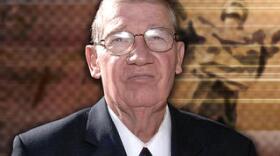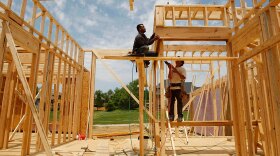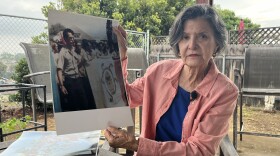For the third year in a row, Dallas Seavey is the first musher to reach Nome, Alaska, winning his fourth Iditarod championship overall. Seavey had been the first to reach the race's final checkpoints, ahead of his father, Mitch – another previous champion.
Seavey's team of seven dogs averaged nearly 9.5 miles an hour on the 1,000-mile journey, according to the Iditarod competition tracking website.
In winning the race, Seavey also broke his own course record, with a time of 8 days, 11 hours, 20 minutes and 16 seconds — an improvement of nearly two hours over his previous mark, set in 2014.
With four Iditarod championships, Seavey trails Rick Swenson for the most titles all-time (Swenson won five between 1977 and 1991). In 2012, Seavey became the youngest Iditarod winner on record, at age 25.
A crowd cheered Seavey on as he jogged across the finish line with his dogs, the dark night light by floodlights and camera flashes.
As Alaska Public Radio reports, the Seavey family has a long history with the Iditarod: Dallas' grandfather, Dan, ran the first race back in 1973. APR adds that Dallas Seavey has now become the youngest musher to reach four titles.
In an interview with NPR's Here and Now last year, Seavey discussed his strategy for winning the grueling race:
"When I got into mushing, the big trend at that point was, how far can we go? People were trying to win the Iditarod by going on farther, or longer and longer runs. What I mean by a longer run is a longer time and distance between rests. So, what may have been normal a couple years ago, where the dogs would run maybe five to six hours and take maybe a six to eight-hour rest, and then run another five to six hours. Now, people are trying to go 10, 11, 12 hours, which some dogs can do. So one simple example would be when I started racing we went against the grain of everybody. When everybody else was trying to go farther and farther, we focused on doing shorter, faster runs. We focused on developing speed and speed was kind of our counter-balance to everybody else's long-range missile, so to speak. And that's something you have to develop in each dog individually and also as a team."
Copyright 2016 NPR. To see more, visit http://www.npr.org/.






